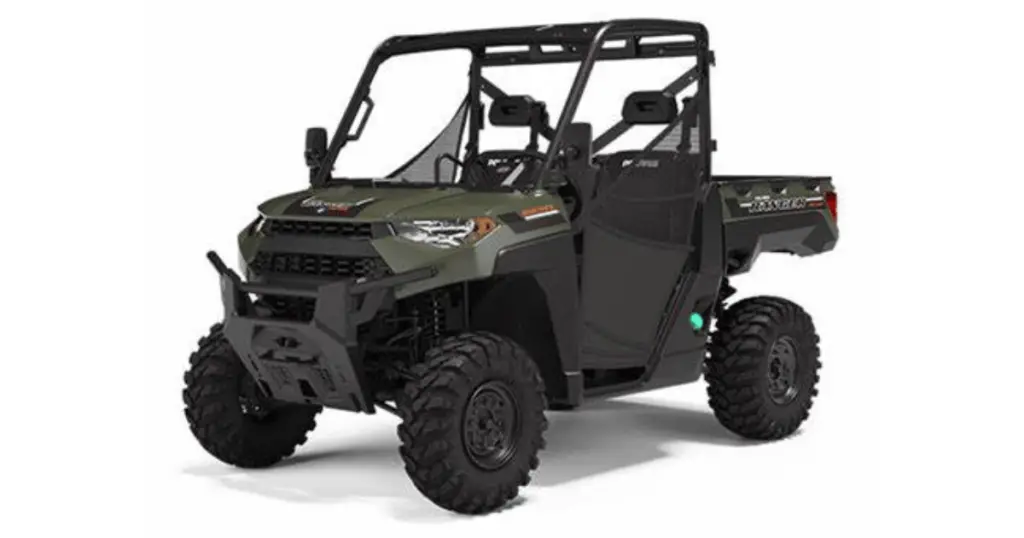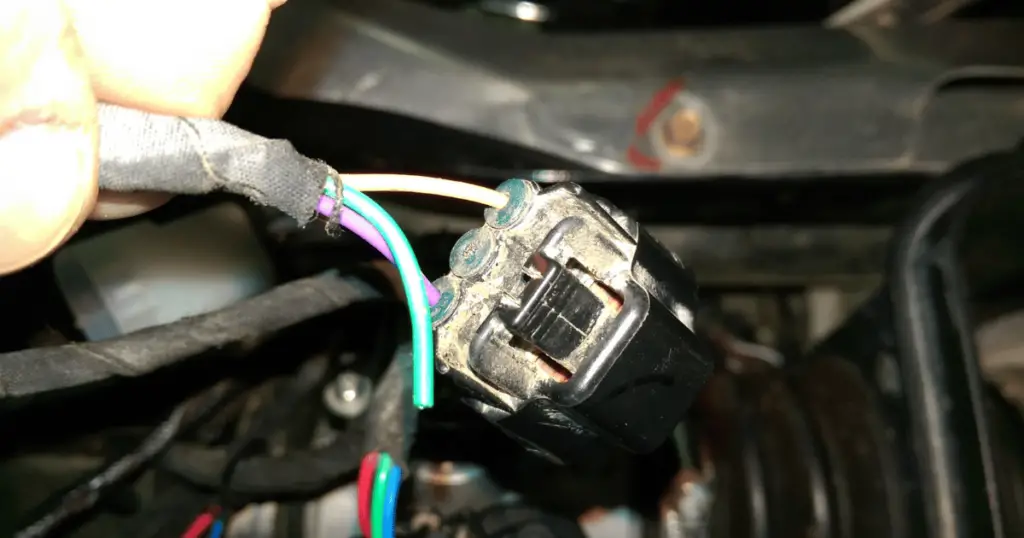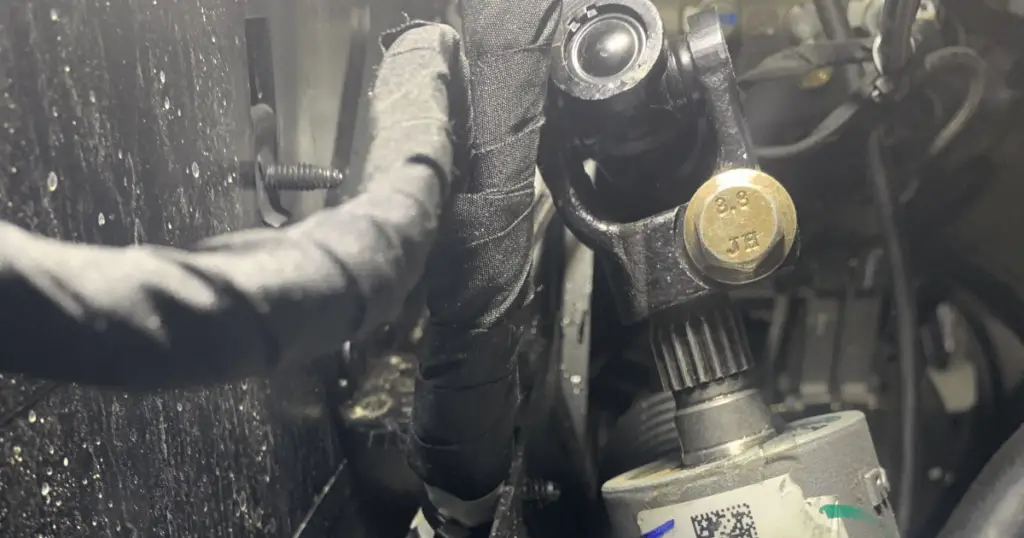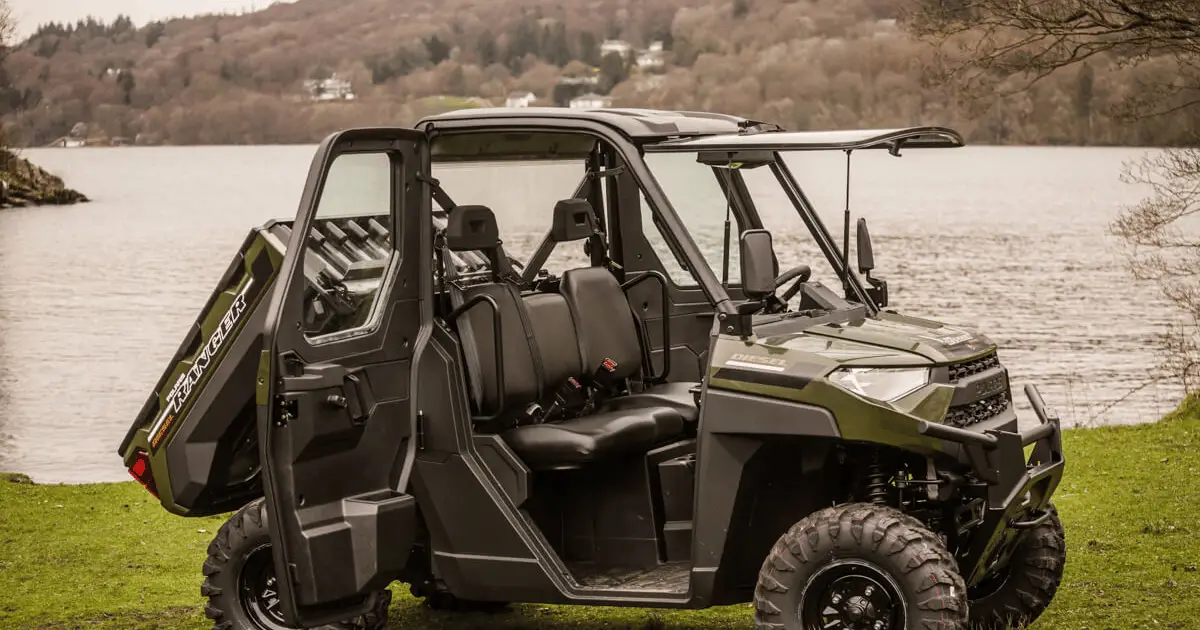Well, you’ve got your hands on a Polaris Ranger Diesel, a robust alternative to the likes of the Kohler and Yanmar engine-equipped UTVs, and you’re probably loving the rough and tumble it brings to your off-road adventures – or the workhorse capabilities it offers on your property. But, let’s be real; even the toughest machines can hit a snag now and then. In the following article, you’ll uncover the common Polaris Ranger Diesel problems that owners face. From pesky starting troubles to mysterious engine quirks, you’ll get the lowdown on what might be interrupting your ride and how you can steer those challenges back to the trail where they belong.

Common Engine Issues
When it comes to the Polaris Ranger Diesel, like any vehicle, it may experience a handful of engine issues. Here’s what you might encounter and what these problems could entail:
Hard Starting or Failure to Start
You turn the key, and nothing happens. Frustrating, right? If your Polaris Ranger Diesel is hard to start or refuses to start entirely, the causes can be numerous. It might be an issue with the battery, the fuel lines, diesel fuel quality, or something more serious with the engine components. It’s essential to check the basics like battery charge and fuel quality, but you may need a deeper dive to diagnose the problem accurately.
Loss of Power and Stalling
Imagine you’re on a trail and suddenly your Ranger starts losing power or, worse, stalls completely. This can be due to a variety of reasons, such as clogged fuel injectors, air in the fuel lines, or trouble with the turbocharger. Such issues, including fuel pump failures, can dampen the overall performance and warrant a look under the hood to identify the culprit.
Excessive Smoke Emission
Thick, billowing smoke is never a good sign. If your Ranger’s engine has started emitting an abnormal amount of smoke, it could be due to problems with the engine oil, damaged injectors, or worn engine components. The color of the smoke can give you clues about the specific issue at hand.
Overheating Engine
Overheating can spell big trouble for your engine. Causes range from low coolant levels to a malfunctioning water pump or blocked radiator. Driving an overheated engine can cause severe damage, so if you notice that temperature gauge creeping up, it’s time to shut down and investigate.
Irregular Engine Performance and Misfiring
When your engine’s performance is inconsistent or you experience misfiring, it’s typically related to problems with fuel delivery or ignition. Clogged fuel injectors and issues with glow plugs or other ignition components might be responsible. These inconsistencies can lead to larger issues if left unchecked.
Electrical Problems

The Polaris Ranger Diesel’s electrical system is sophisticated, but it’s not immune to issues:
Battery Drain and Charging Issues
If you’ve ever found yourself with a drained battery, a common issue reported by forums dedicated to Polaris Ranger enthusiasts, it might be due to parasitic drain or a failing alternator not charging the system properly. Regular checks and maintenance can help catch these issues early.
Faulty Wiring and Connector Problems
Wires can fray, connectors can loosen, valve covers can crack, and corrosion can set in, leading to all sorts of electrical gremlins. Keeping an eye on the condition of the wiring harness can save you from headaches down the road.
Malfunctioning Sensors
Sensors play a crucial role in the modern diesel engine management. If a sensor is faulty—whether it’s the oxygen sensor, throttle position sensor, or any other—it can throw off your engine’s performance, sometimes significantly.
Starter Motor Failure
That momentary silence followed by a click when you try to start your vehicle might mean the starter motor has failed. This component can wear over time, especially if you’re frequently starting your engine in cold conditions.
Issues with the Instrument Cluster
Your instrument cluster is your window to how your vehicle is performing. If it starts acting up, you might find yourself flying blind. Common issues include flickering lights or gauges that give incorrect readings.
Related: Full Guide To Identifying Polaris Ranger Check Engine Codes
Fuel System Complications
Fuel system issues can lead to a range of engine performance problems:
Clogged Fuel Injectors
Clogged injectors can wreak havoc on engine performance, leading to poor combustion and reduced power. Regular cleaning of the air filter and injectors may be necessary, especially if you’re not rigorous about fuel quality.
Fuel Filter Contamination
Fuel filters keep contaminants from entering the engine but can become clogged over time. Replacing or cleaning the fuel filter regularly according to service schedules is key.
Air in Fuel Lines
Air in the fuel lines can disrupt fuel delivery, causing your Ranger to sputter and stall. It’s a tricky problem that sometimes needs a professional touch to bleed the lines properly.
Problems with Fuel Pump
A failing fuel pump can lead to a lack of fuel pressure, which in turn can cause all sorts of drivability issues. You might notice a whining noise from the fuel tank area as a first symptom.
Diesel Quality and Storage Issues
Bad diesel can introduce contaminants into your system, leading to a multitude of problems. Proper storage and purchasing fuel from reputable sources are a must.
Transmission and Drive Train Issues
The transmission and drivetrain are what connect your engine’s power to the wheels. They need to be in top shape:
Difficulty in Shifting Gears
If shifting gears, especially in a Ranger Diesel, with a clutch engagement problem, becomes a chore or it feels like you’re wrestling with the shifter, it might indicate issues with the transmission fluid, linkage, or the gears themselves.
Transmission Overheating
Just like your engine can overheat, so too can your transmission. Overloading, towing heavy weights, or a lack of proper fluid levels can lead to this issue.
Clutch Engagement Problems
Engaging and disengaging the clutch should be a smooth operation. If it’s not, you might be looking at worn components causing clutch issues, or simply an adjustment issue if you’re lucky.
Drive Belt Wear and Failure
The drive belt, often a point of discussion, is crucial in transferring power. Worn or snapped belts can mean an immediate loss of propulsion and can happen at the most inopportune times.
CV Joint and Axle Damages
Clicking noises when turning and vibrations during driving could indicate CV joint or axle trouble. These are crucial parts of the drivetrain and need immediate attention when showing signs of wear.
Suspension and Steering Challenges

Your connection to the terrain is governed by the suspension and steering systems:
Worn or Damaged Suspension Components
Suspension parts like springs and bushings can wear out and impact the comfort and control of your ride, especially if you regularly traverse rough terrain.
Power Steering Malfunctions
Loss of power steering can make handling your vehicle feel like a workout, especially at lower speeds. Hydraulic fluid leaks or pump issues are often to blame.
Shock Absorber Leaks or Failures
Shock absorbers ensure a smooth ride and keep your tires in contact with the ground. Leaks or failures here can lead to a bouncy ride and reduced control.
Bushings and Ball Joint Wear
Noisy suspensions or vague steering could be symptoms of worn bushings or ball joints. These components are critical for maintaining proper wheel alignment and handling.
Alignment Problems Affecting Handling
Misalignment can result in uneven tire wear and poor handling. Keep your vehicle’s alignment in check, especially if you’ve hit a sizable pothole or curb.
Braking System Failures
Stopping is as important as going. Don’t overlook these potential braking issues:
Brake Pad Wear and Tear
Brake pads naturally wear down over time, reducing stopping power. Regular checks can prevent you from metal-on-metal grinding, which is bad news for your rotors.
Compromised Brake Lines
Rusted or damaged brake lines can lead to fluid leaks and a spongy pedal feel, putting you at risk of brake failure.
Failure of the Master Cylinder
The master cylinder is the heart of your braking system. If it fails, indicating a premature failure, it could result in a complete loss of braking power.
Caliper Seizing
Calipers that stick can cause uneven braking and potentially overheat the brake rotors, leading to warping and diminishing brake performance.
Insufficient Brake Fluid Levels
Like any hydraulic system, your brakes need the right amount of fluid to operate effectively. Low levels can lead to compromised braking ability.
Cooling System Issues
The cooling system helps keep your engine at the optimal temperature:
Radiator Blockage or Leaks
A blocked or leaking radiator can’t transfer heat efficiently, causing your engine to overheat. Regular checking can help identify these issues.
Coolant Hose Cracks and Leaks
Rubber hoses don’t last forever. A cracked hose can lead to coolant leaks and, ultimately, overheating.
Thermostat Failures
The thermostat controls coolant flow. If it fails in a closed position, your engine will overheat quickly.
Water Pump Malfunctions
The water pump circulates coolant through the engine. A failure here can be catastrophic for your engine.
Defective Cooling Fans
Cooling fans help maintain the temperature when your vehicle is stationary. If they’re not working, your engine might overheat in traffic or on trails.
Exhaust System and Emission Control Problems
Your exhaust system doesn’t just quiet your engine—it helps control emissions:
Blocked or Leaking Exhaust Pipes
A blockage can cause backpressure, damaging your engine, while leaks can lead to dangerous exhaust fumes entering the cabin.
DPF (Diesel Particulate Filter) Clogging
For diesel engines like in your Ranger, the DPF traps soot to reduce emissions. If it gets clogged, it can cause reduced performance and requires cleaning or replacement.
EGR (Exhaust Gas Recirculation) System Failures
The EGR system reduces nitrogen oxide emissions but can fail, leading to performance issues and increased emissions.
Issues with the SCR (Selective Catalytic Reduction) System
The SCR system uses DEF (Diesel Exhaust Fluid) to reduce emissions. Problems here can lead to warning lights and require attention to keep your emissions in check.
Oxygen Sensor and Catalytic Converter Faults
The oxygen sensor measures exhaust composition to optimize fuel mix, and the catalytic converter reduces harmful emissions. Failures in these components can lead to poor performance and failed emissions tests.
Maintenance and Durability Concerns
Long-term vehicle health hinges on maintenance:
Regular Maintenance Schedule Ignored
Skipping regular maintenance is like skipping a doctor’s appointment—small problems can turn into big ones. Stick to the service schedule to keep your Ranger running smoothly.
Wear and Tear of Body and Frame Parts
Rust, corrosion, and stress fractures can affect the body and frame, especially if you regularly take your Ranger off-road. Regular inspections can catch issues before they become serious.
Weather-Related Deterioration
UV rays, salt, rain, and cold can all wear down your vehicle over time. Protective measures and storage options can help mitigate these effects.
Upkeep of Tires and Wheel Bearings
Tires worn down or not properly inflated can lead to handling problems and punctures. Wheel bearings, similarly, can wear out and cause noise and vibration.
Longevity of Seals and Gaskets
Rubber seals and gaskets can dry out and crack, leading to leaks. Keeping them in good condition is vital for the health of various systems.
So this begs the question: How many miles will a Polaris Ranger last?
Diagnostic and Repair Troubles
Finally, troubleshooting and repairing vehicle issues can present their own set of challenges:
Difficulty in Troubleshooting Issues
Sometimes, diagnosing a vehicle’s problem can be as difficult as solving a mystery. Patience and a methodical approach can pay off.
Access to Service Manuals and Repair Guides
Service manuals are your guide to your vehicle’s inner workings. Without them, repairs can turn into guesswork.
Availability of Replacement Parts
Finding the right part, especially for specific year models, can be a hassle, more so for less common models or older vehicles. It’s crucial to have a trusted parts supplier.
Requirement for Specialized Tools and Equipment
Some vehicle repairs need specialized tools. Not having access to these can make repairs difficult or impossible.
Variances in Model Years and Specifications
Differences in model years and specifications can trip you up if you’re not careful. Always double-check that the information or parts are correct for your specific model year.
Keeping your Polaris Ranger Diesel in top condition might seem like a tall order, but being attentive to these common issues will help you enjoy your vehicle for the long haul. Regular maintenance and a careful eye can keep you riding the trails without unexpected interruptions.
Read next: Worst Polaris Ranger Years to Avoid (+The Best)
Read More Ranger:
- Polaris General vs Polaris Ranger: Which Side-by-Side Wins?
- Polaris Ranger vs Kawasaki Mule: A Side-by-Side Comparison
- Honda Pioneer 1000 vs Polaris Ranger 1000: Total Shootout
- Honda Pioneer 520 vs Polaris Ranger 500: A Real Shootout
- Honda Pioneer vs Polaris Ranger: Who Packs The Punch?
- Can-Am Defender vs Polaris Ranger: Who Rules Supreme?
- Polaris Ranger 800 Check Engine Light Codes: Tips and More
- CFMoto UForce 1000 vs Polaris Ranger: A Deep Comparison


Leave a Reply